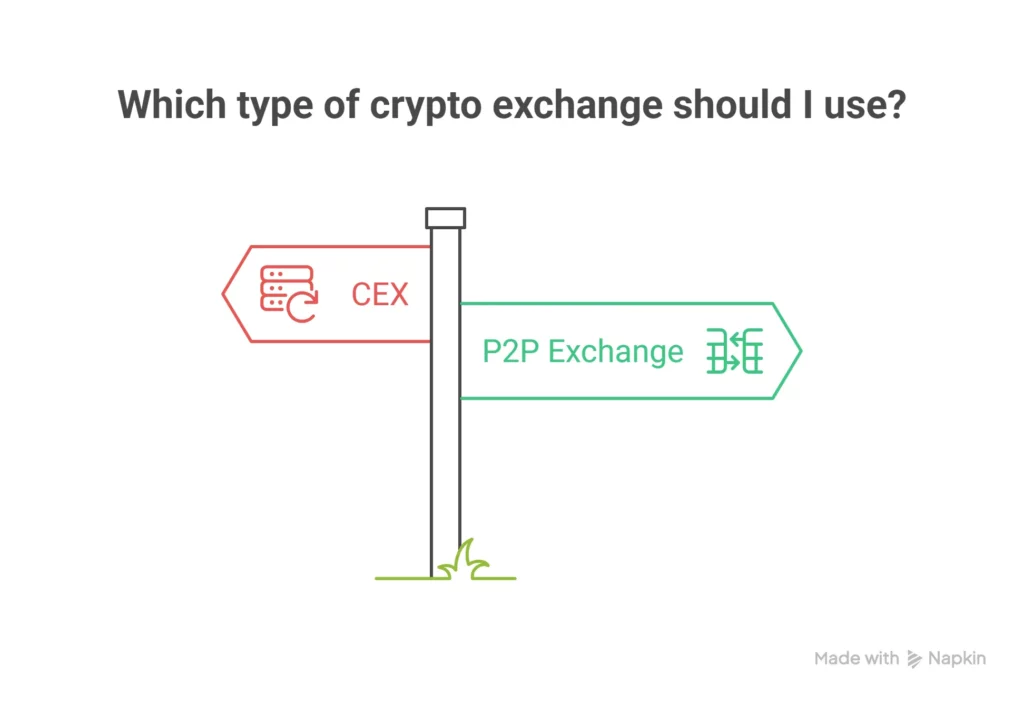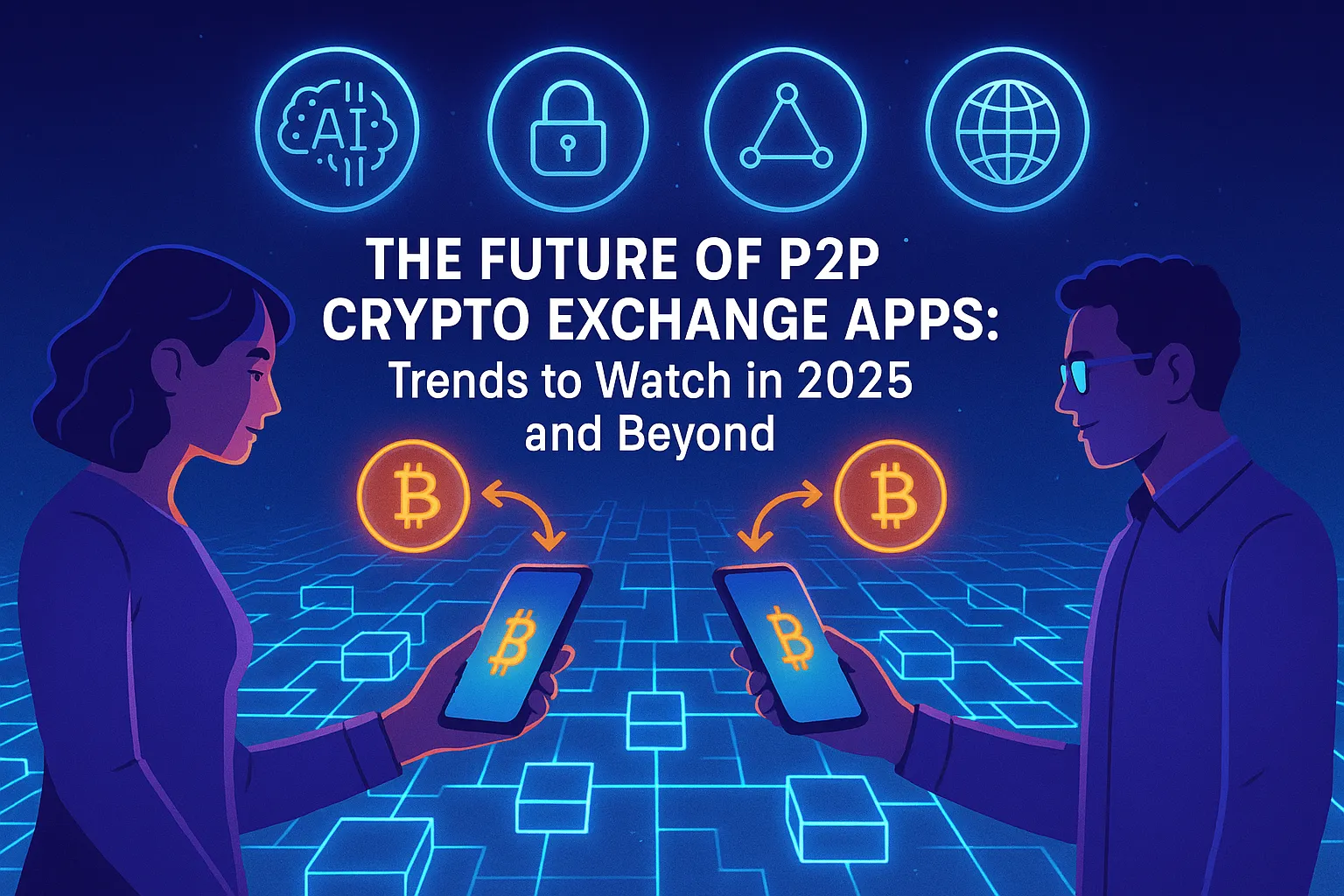Ever tried explaining peer-to-peer (P2P) crypto exchanges to your grandma? Yeah, good luck with that. But if you’re an entrepreneur, startup founder, or just a blockchain believer, you already know these apps aren’t just buzz—they’re building blocks of the decentralized revolution.
With governments tightening regulations and users demanding anonymity, P2P exchanges have become the underground rockstars of the crypto scene. Platforms like Paxful and LocalBitcoins rewrote the rules of asset exchange, making it as simple as messaging someone on Telegram. But here’s the kicker: we’re only scratching the surface.
As we hurtle into 2025, the future of P2P crypto exchange apps looks less like a traditional finance clone and more like the lovechild of TikTok UX and DeFi utility. At Miracuves, we’ve been quietly empowering pioneers to launch agile, secure, and scalable P2P exchange clones—and what we’re seeing is nothing short of a metamorphosis.
Why P2P Crypto Exchange Apps Are Gaining Ground
Traditional centralized exchanges (CEXs) have always had one Achilles’ heel: control. They hold your keys, your coins, and sometimes your data. P2P apps flip the script, allowing users to trade directly with one another—no middleman, no gatekeeper, no BS.
Benefits that keep pulling users in:
- Decentralization: No single point of failure.
- Privacy-first approach: No need to spill personal details.
- Borderless trading: Useful in countries with crypto restrictions.
- Fiat flexibility: Users can trade using local currencies and payment methods.
Read more: How to Start a P2P Crypto Exchange Platform Business

Trends Shaping the Future of P2P Crypto Exchanges
1. Rise of Mobile-First P2P Platforms
By 2025, mobile-first design isn’t optional—it’s gospel. The majority of crypto traders in regions like Africa, Southeast Asia, and Latin America access these platforms via smartphones. Expect slick UI, gesture-based onboarding, biometric authentication, and lightning-fast load times.
2. Integration of Layer-2 Protocols
To reduce fees and increase transaction speed, apps are moving to Layer-2 solutions like Arbitrum and Optimism. This not only enhances scalability but also minimizes congestion on mainnets like Ethereum.
3. AI-Powered Fraud Detection and Dispute Resolution
Gone are the days of manual conflict resolution. AI and ML now monitor patterns, flag suspicious activities, and mediate disputes with near-zero human intervention—bringing peace to the wild west of crypto.
4. Multi-Chain and Cross-Chain Compatibility
2025 will be multi-chain by default. The new generation of P2P exchanges will let users swap BTC for SOL, ETH for ADA—without touching a centralized liquidity pool.
5. NFT Integration and Token Gating
Here’s a wild but real trend: using NFTs as identity verification. Your on-chain identity becomes your passport for higher trading limits or exclusive peer groups—like getting access to a VIP lounge.
6. Localized Trading Features
The hyper-localization of P2P crypto platforms is already underway. Expect to see:
- Regional language support
- Localized payment methods (UPI in India, M-PESA in Kenya)
- Cultural UI tweaks (color symbolism, gesture UX)
Snapshot of Leading P2P Crypto Exchange Apps
Let’s take a quick look at the trailblazers and what they’ve brought to the table.
| Platform | Unique Feature | Origin |
| Paxful | 300+ payment options, escrow security | USA |
| LocalBitcoins | Reputation-based trading, strong KYC | Finland |
| Hodl Hodl | Non-custodial, no KYC | Latvia |
| Bisq | Fully decentralized, Tor-enabled | Global |
| LocalCryptos | ETH + BTC trades, non-custodial | Australia |
| Noones | Mobile-first, localized fiat integrations | Nigeria |
| AgoraDesk | Privacy-focused, supports Monero | Global |
Monetization Models That Actually Work
P2P apps are no longer passion projects—they’re profit machines. Here’s how they’re making money:
- Trading fees (e.g., 0.5% per transaction)
- Ad-based models (priority listings)
- Escrow fee sharing
- Memberships & token staking perks
- In-app wallets & exchange rates
Read more: Cost vs Features: Striking the Right Balance in P2P Crypto App Development
Who’s Building These Apps (And Who Should)
The beauty of P2P exchange apps is that they’re not just for crypto nerds. Entrepreneurs, fintech founders, even community-based organizations are building their own versions to serve niche communities.
And here’s where we come in:
Miracuves helps you build your own P2P crypto exchange clone—scalable, secure, feature-packed, and 100% yours.
Read more: Critical Mistakes to Avoid When Building a P2P Bitcoin Trading App Clone
Conclusion
P2P crypto exchanges are leveling up—from niche experiments to powerhouse platforms fueling a global, decentralized economy. Armed with AI-driven tools, hyperlocal features, and true user control, they’re defining how the next generation will trade value across borders.
At Miracuves, we partner with bold founders to build ready-to-scale P2P exchange clones that are smart, secure, and monetization-friendly. Dreaming of your own crypto platform? Let’s co-create something extraordinary.
FAQs
Q1. What is a P2P crypto exchange?
A P2P crypto exchange allows users to buy and sell cryptocurrencies directly with each other without a centralized intermediary.
Q2. Is it safe to use P2P exchanges?
Yes, especially when platforms use escrow services and advanced fraud detection. But always do your due diligence.
Q3. How do P2P exchanges make money?
Through trading fees, ads, memberships, and in-app wallet services.
Q4. Can I build a P2P crypto app like Paxful?
Absolutely. With the right clone framework and development partner, you can build and customize it to fit your niche.
Q5. What features should a modern P2P app have?
Escrow, KYC/AML integration, mobile-first UI, fiat support, and fraud prevention tools are must-haves.
Q6. Why choose Miracuves for P2P app development?
Because we specialize in launching clone-based apps that are scalable, secure, and revenue-ready—with industry-grade speed and support.
Related Articles:







